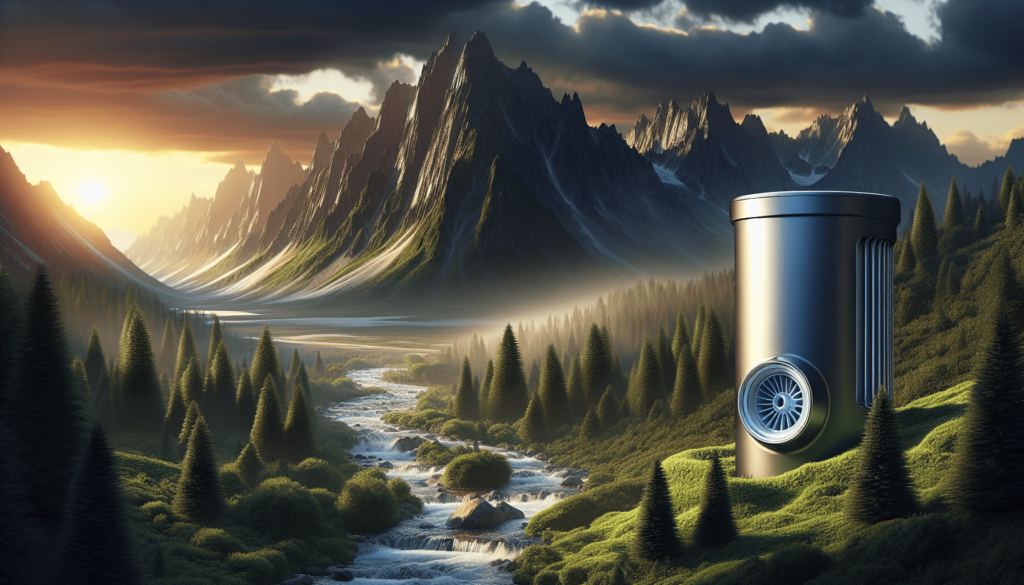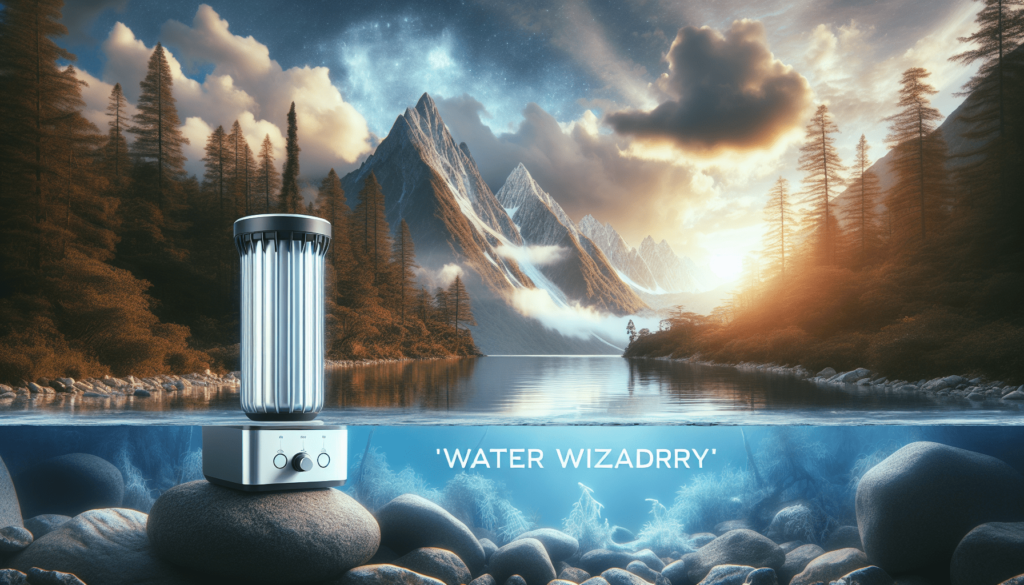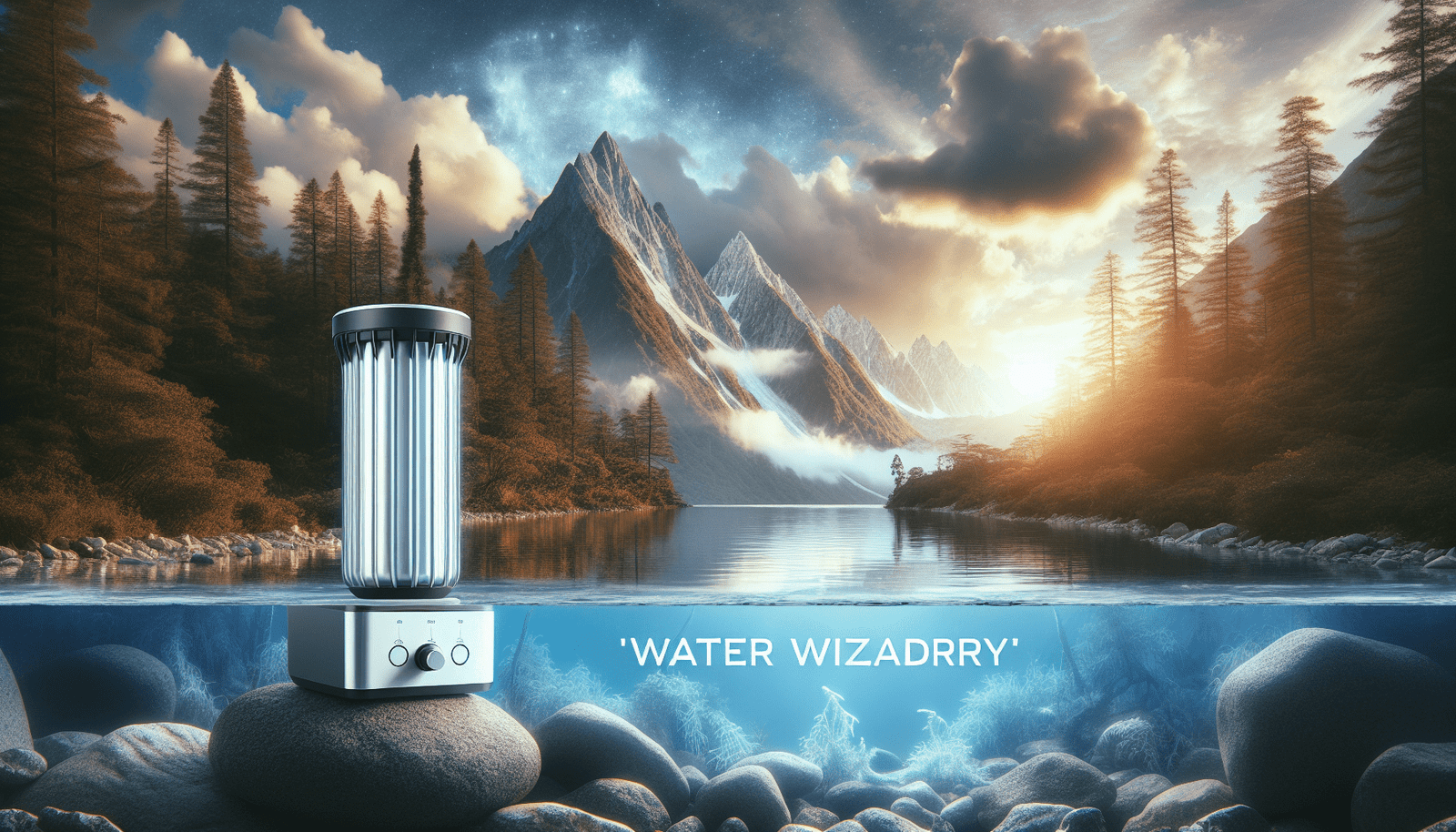In the wilderness, water is the key to survival. Without a reliable source of clean water, your adventure can quickly turn into a dangerous situation. That’s why understanding water purification techniques and knowing how to source water in the wild is crucial. In my blog article, “Water Wizardry: Purify And Source Water In The Wilderness,” I’ll guide you through the essential knowledge and skills needed to ensure you stay hydrated and healthy during your outdoor escapades. From purifying water to locating reliable water sources, this article will equip you with the necessary tools to become a master of the wilds. So grab your canteen and let’s dive into the fascinating world of water wizardry in the wilderness!
Importance of Water in the Wilderness
Water is the cornerstone of survival in any wilderness environment. It is essential for the human body to function properly and maintain optimal health. As an adventurer or survivalist, understanding the importance of water and its role in your overall well-being is crucial.
The Human Body’s Dependence on Water
Did you know that the human body is made up of approximately 60% water? Every cell, tissue, and organ in your body requires water to function effectively. Water helps regulate body temperature, aids in digestion, lubricates joints, carries nutrients and oxygen to cells, and flushes out waste products. Without an adequate supply of water, your body’s systems can start to shut down, leading to dehydration and potential health risks.
Risks of Dehydration in the Wilderness
Dehydration occurs when your body loses more water than it takes in, which can happen quickly in a wilderness setting, especially in hot and arid climates. The symptoms of dehydration can range from mild to severe and may include increased thirst, dry mouth, weakness, dizziness, fatigue, decreased urine output, and even confusion or fainting. Severe dehydration can be life-threatening, so it’s important to recognize the signs and take immediate action to replenish your body’s water levels.
The Role of Water in Outdoor Survival
When venturing into the wilderness, you must prioritize water procurement. Without a reliable source of water, your chances of survival diminish greatly. Water plays a vital role in various survival tasks, such as hydration, cooking, cleaning wounds, and even signaling for help. Understanding how to find, collect, purify, and store water in the wilderness is essential knowledge that every adventurer should possess.
Sources of Water in the Wilderness
In a wilderness environment, water sources might not always be readily available, so knowing how to identify and procure water from natural sources is crucial for your survival.
Identifying Natural Water Sources
Understanding how to identify natural water sources is a skill that could save your life. Look for signs such as vegetation, animal tracks, and low-lying areas that may indicate the presence of water. Rivers, streams, lakes, springs, and even natural depressions can be potential sources of water in the wilderness.
Rainwater Collection Techniques
Rainwater is an excellent source of hydration in the wilderness, provided you know how to collect and utilize it effectively. With the proper knowledge and a few basic tools, such as a tarp and a container, you can capture rainwater and ensure a continuous supply of drinking water.
Finding Underground Water
In arid regions, underground water sources such as wells, seeps, and springs can be invaluable for survival. By understanding the terrain and geological indicators, you can increase your chances of locating these hidden water sources to sustain yourself in the wilderness.
Utilizing Dew and Moisture
In areas with high humidity, collecting dew and moisture can be a valuable technique for securing water. By using materials such as cloth, grass, or plastic, you can create a simple condensation trap to gather water from the air.

Water Purification Methods
In the wilderness, even seemingly pristine water sources can contain harmful bacteria, parasites, and other contaminants. Therefore, learning effective water purification methods is essential to safeguard your health and well-being.
Boiling Water
Boiling water is one of the oldest and most reliable methods of water purification. By bringing water to a rolling boil for a minimum of one minute (or longer at higher elevations), you can effectively kill most microorganisms and make the water safe to drink.
Using Water Filters
Water filters are portable devices that remove impurities, such as bacteria, protozoa, and even some viruses, from water. These filters work by physically trapping contaminants as water passes through them, ensuring you have a clean and safe water supply in the wilderness.
Chemical Water Purification
Chemical water purification involves the use of disinfectants, such as chlorine or iodine, to kill harmful microorganisms in water. By following the manufacturer’s instructions and allowing the appropriate contact time, you can effectively purify water for consumption.
UV Water Purification
UV water purification devices use ultraviolet light to destroy the DNA of bacteria, viruses, and other pathogens, rendering them harmless. By exposing water to UV light for the specified duration, you can achieve a high level of water disinfection without the need for chemicals or filters.
Solar Water Disinfection
Solar water disinfection, also known as SODIS, is a simple and effective way to purify water using solar energy. By filling clear plastic or glass containers with water and leaving them in direct sunlight for several hours, the sun’s UV radiation will kill pathogens, making the water safe to drink.
Creating Water Storage Solutions
In addition to procuring and purifying water, it’s essential to have reliable storage solutions to ensure you always have access to a clean water supply.
Using Water Bottles and Canteens
Water bottles and canteens are an indispensable part of any outdoor kit. They are lightweight, durable, and easy to carry, making them an excellent choice for storing and transporting water in the wilderness.
Improvised Containers for Water Storage
In situations where you don’t have access to traditional water storage containers, improvising with materials like plastic bags, animal bladders, or hollowed-out tree trunks can provide temporary solutions for storing water.
Water Bladders and Hydration Packs
Water bladders and hydration packs are designed specifically for outdoor enthusiasts and provide a convenient way to carry and access water. These specialized containers are often equipped with a drinking tube, allowing you to stay hydrated on the move.

Water Treatment Techniques for Wilderness Survival
In a survival situation, you may not always have access to commercial water treatment products. Knowing how to utilize alternative water treatment techniques can be a lifesaver.
Water Disinfection Tablets
Water disinfection tablets, such as those containing chlorine dioxide, are a lightweight and easy-to-use option for purifying water on the go. By following the instructions provided, you can effectively eliminate harmful microorganisms from your water supply.
Iodine and Chlorine for Water Treatment
Iodine and chlorine are effective chemical agents for water treatment. By using iodine or chlorine solutions in the appropriate concentrations, you can safely disinfect water and make it suitable for consumption.
Activated Charcoal Filters
Activated charcoal filters can be used to remove unpleasant tastes and odors from water. While they don’t kill microorganisms, they can improve the palatability of water and make it more appealing to drink.
Improvised Water Purification Methods
In situations where commercial water treatment products are unavailable, improvising with natural materials such as sand, rocks, and cloth can help filter and purify water. These methods may not be as effective as specialized equipment but can provide a viable solution in an emergency.
Dangerous Water Sources and How to Avoid Them
While water is essential for survival, not all water sources are safe for consumption. It’s crucial to be able to identify and avoid contaminated water to prevent illness and further endangerment.
Identifying Contaminated Water
Contaminated water sources may contain harmful bacteria, parasites, chemicals, or other pollutants that can cause illness. Look for visible signs of pollution, such as unusual colors, odors, or floating debris, to identify potentially contaminated water.
Recognizing Animal or Human Presence in Water Sources
Water sources frequented by animals or humans can pose a higher risk of contamination. Be cautious of areas where animals drink or bathe and avoid water sources located near human settlements or high human activity areas.
Avoiding Standing Stagnant Water
Stagnant water, such as ponds, puddles, or stagnant pools, can harbor harmful bacteria and parasites. Always seek moving water sources like streams or rivers when possible, as they are less likely to be contaminated.
Water Conservation Methods in the Wilderness
In a survival situation, water conservation becomes paramount. By implementing water-saving techniques, you can stretch your water supply and increase your chances of survival.
Prioritizing Water Usage
In the wilderness, it’s essential to prioritize water usage for essential activities such as hydration, cooking, and sanitation. Avoid wasting water on non-essential tasks and use it sparingly to ensure it lasts as long as possible.
Using Greywater for Secondary Purposes
Greywater, which is water that has been used for washing or cleaning but is still relatively clean, can be repurposed for secondary tasks such as watering plants or cleaning equipment. By reusing greywater, you can conserve your fresh water supply.
Water Recycling Techniques
In certain situations, water recycling may be necessary. Methods such as distillation or filtration can help remove impurities from used water, making it safe for consumption or reuse.
Emergency Water Collection and Purification
In dire situations, you may need to resort to unconventional methods of collecting and purifying water to ensure your survival.
Water Collection from Unconventional Sources
When traditional sources are scarce or unavailable, you may need to think outside the box when it comes to collecting water. Consider options such as using vegetation to collect dew, capturing rainwater in improvised containers, or utilizing rock crevices to trap water.
Emergency Water Purification Techniques
In emergency situations, your access to purification equipment may be limited. However, you can still employ basic water purification techniques, such as boiling, sunlight exposure, or chemical treatment, to make water safe for consumption.
Essential Water-related Gear for Wilderness Survival
When venturing into the wilderness, having the right gear can make all the difference. Here are some essential water-related items to include in your survival kit:
Water Filters and Purification Systems
Investing in a reliable water filter or purification system is crucial for ensuring a safe water supply. Look for filters that are lightweight, portable, and capable of removing a wide range of contaminants.
Portable Water Storage Solutions
Pack collapsible water bottles, canteens, or bladders to ensure you have ample water storage capabilities without taking up unnecessary space in your pack.
Water Purification Tablets
Water purification tablets are lightweight and compact, making them an excellent backup option in case your primary purification method fails or if you run out of other treatment options.
Collapsible Water Containers
Collapsible water containers are a versatile option for carrying and storing water in the wilderness. They are lightweight, compact when empty, and can be easily packed away when not in use.
Preparation and Planning for Water Needs
Being prepared and planning ahead for your water needs is essential for a successful wilderness adventure or survival situation.
Calculating Water Requirements
Understanding how much water you will need is crucial for planning purposes. As a general rule, aim for a minimum of 2 liters (or half a gallon) of water per person per day, but adjust this amount based on factors such as climate, activity level, and duration of your trip.
Researching Water Sources for Your Destination
Before heading into the wilderness, research the water sources available in your destination. Familiarize yourself with rivers, streams, lakes, and any other potential water sources to ensure you have a plan in place for procuring water.
Creating a Water Procurement Strategy
Developing a water procurement strategy will help you prioritize your efforts and stay organized. Identify backup water sources, determine collection and purification methods to have on hand, and outline alternative strategies in case your primary plan fails.
In conclusion, water is a fundamental component of survival in the wilderness. Understanding the importance of water, being able to identify and procure safe sources, and implementing effective purification and storage techniques are all essential skills for any outdoor enthusiast. By mastering the art of water wizardry, you can ensure your hydration, health, and overall well-being, even in the most challenging of wilderness environments. Stay prepared, stay safe, and embrace the adventure that awaits!

